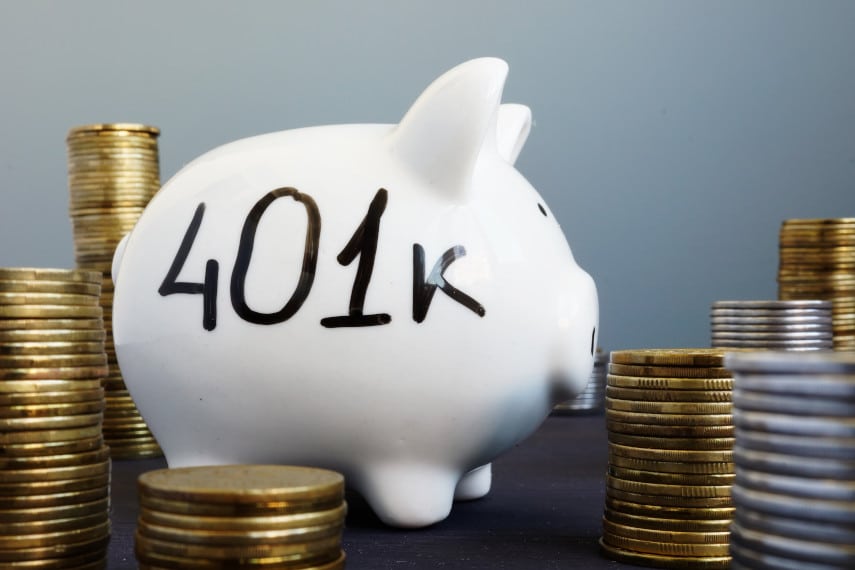
How much money has the median American workers saved up for retirement? If you answered zero, you’re correct. You may read articles saying that the average American has about $200,000 saved up in a retirement account, or that the average 55-64-year-old household has $374,000 in retirement savings, but those figures are often reporting the average, or mean. Those numbers end up being skewed higher due to a small number of investors with a huge amount of savings. The median, i.e. the middle point, ends up being much smaller. That $200,000 figure becomes only $59,000.
What makes it even worse is that that figure only takes into account those Americans who actually have retirement savings. So of the half of Americans who actually have retirement savings, 50% have less than $59,000 saved up. Given that the normal recommendation is to have at least $1 million in savings by retirement, that means that most American households are in poor shape.
Retirement planning has traditionally centered around the “three-legged stool”: pensions, private savings, and Social Security. But all three of those are not doing too well. When looking at your three-legged stool, how does your retirement plan stack up?
Pensions: No Longer Guaranteed
Previous generations bought into the idea of retirement pensions. In exchange for slightly lower salaries while working, employees were promised generous benefits in retirement, guaranteed for life. Those pension funds, whether public or private, put aside money and invested it, assuming consistent growth rates over time.
But lackluster economic performance of those investments in recent years has put the screws to many pension funds. Many private employers have underfunded their pensions plans, with several ending those plans and turning them over to the government’s Pension Benefit Guaranty Corporation (PBGC). One of the most recent companies to do that was Sears, which ended its pension plan in January.
Pensions for public employees are in similarly bad shape, with government workers promised lavish benefits and most funds chronically underfunded. Pension fund managers have long assumed that average long-term asset growth will be on the order of 7-8% annually. But with stock markets having only averaged 4-5% annualized growth over the past two decades, most pensions funds are significantly underfunded.
Those who expect to rely on pensions for their retirement will face a very difficult reality in the future. Even those whose pension plans are well-funded need to understand that they can’t place 100% confidence in their pension to see them through retirement.
Social Security: The Failing Backstop
Everyone knows by now that Social Security is failing, but no one is willing to do anything about it. Within 15 years at most the Social Security trust fund will run dry, and incoming Social Security tax receipts are insufficient to pay out all the benefits that retirees are expecting. As of 2034 retirees can expect to take at least a 20% cut in benefits if nothing is done to shore up Social Security’s financial situation.
Social Security was only expected to be a backstop, not a primary source of retirement funds. But successive generations of Americans have come to expect that Social Security will always be there, and those who haven’t been able to save enough for retirement have always taken for granted that they would be able to supplement their savings with Social Security income. That looks increasingly less likely to be the case.
Private Savings: A Massive Deficit
We’ve already seen that the median American employee has nothing saved for retirement and that even most of those saving for retirement have pitifully small amounts of savings. Overall it’s estimated that Americans have about $4.3 trillion less in savings than they should. That’s a huge deficit to make up, but it’s not impossible. Even if you haven’t done a good job of saving so far, it’s possible to kick your savings up a notch to get into the best position you can come retirement.
If you’re younger than 45, you probably have at least 20 years of time in the workforce ahead of you. Start thinking about the future and saving money now. Saving more money earlier will stand you in much better stead than saving more money later.
If you’re over 45, you can take advantage of the catch-up contributions that you’re allowed to make once you hit age 50. In the year you turn 50 you can contribute $25,000 annually to a 401(k) account (versus $19,000 normally) and you can make an extra $1,000 in annual contributions to an IRA account. Saving for retirement takes discipline and dedication, but by minimizing expenses, paying down debt, and saving as much as possible while you’re working you can help guarantee yourself a comfortable retirement.
Once you have money saved and invested it’s vitally important that you manage that money well. Don’t treat your retirement savings as a piggy bank to pay for frivolous spending. And don’t keep all of your eggs in one basket. It can be tempting to stay in stock markets for a long time while they’re doing well, but once they start to fall investors can lose money quickly. It can take years or decades for investors to make up the losses they suffer during a stock market crash.
That’s why many investors make sure to keep a portion of their investments in gold, in order to hedge against the inevitability of losses in the stock market. Gold has protected investors and their savings for centuries against financial crises and stock market panics. While stock markets lost over half their value during the last financial crisis, gold gained over 25%. And with the realization that markets today have topped out and are headed for a crash, more and more investors are preparing themselves by investing in gold.






